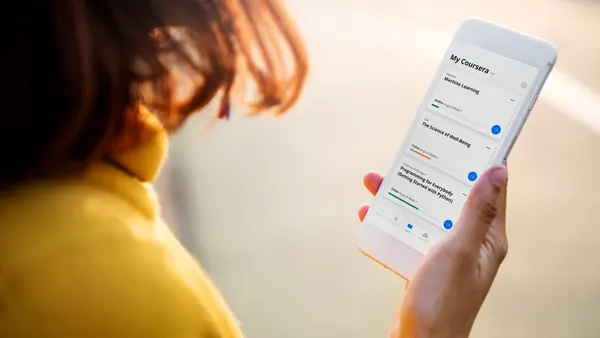Dive Brief:
- For the past 15 years, blended learning has quietly risen as a primary design approach in the world of e-learning, according to an article a CLOmedia.
- Blended learning reflects the natural way to mix and match content, delivery modes and timing to personalize development. That could mean combining e-learning with face-to-face meetings, video segments, access to a community of collaboration and more.
- Blended learning has also taken on a user-driven dimension. More and more learners are reaching for their own blend of open content such as TED Talks and personally curated content from the Internet, intranet or their own external communities. For example, the Masie Center believes that more than 80% of blended learning is created or modified by the learner.
Dive Insight:
That said, there are several missing elements in the shift toward blended learning, the article reports. Some of those include creating a vocabulary or terminology for blended learning, little or no research on blending effectiveness, and a lack of benchmarking on blended learning patterns.
The author says that the future offers some exciting potential for blended learning, especially as adaptive and responsive capabilities to learning design are added. Throughout a course, for example, it could offer an extended video, a link to a key peer with expertise, the ability to read the content in a native language, or the opportunity to access a dynamic FAQ developed by monitoring other users’ blended learning activity.
Blended learning is natural, the author writes, and not an invention of the Internet age. Past generations went to school and blended faculty lectures, homework and conversations with other students to gain mastery of objectives. Now, technology is stretching choices, affording learners the ability to spend the right amount of time with the right learning activity -- a combination that is different for each learner.










